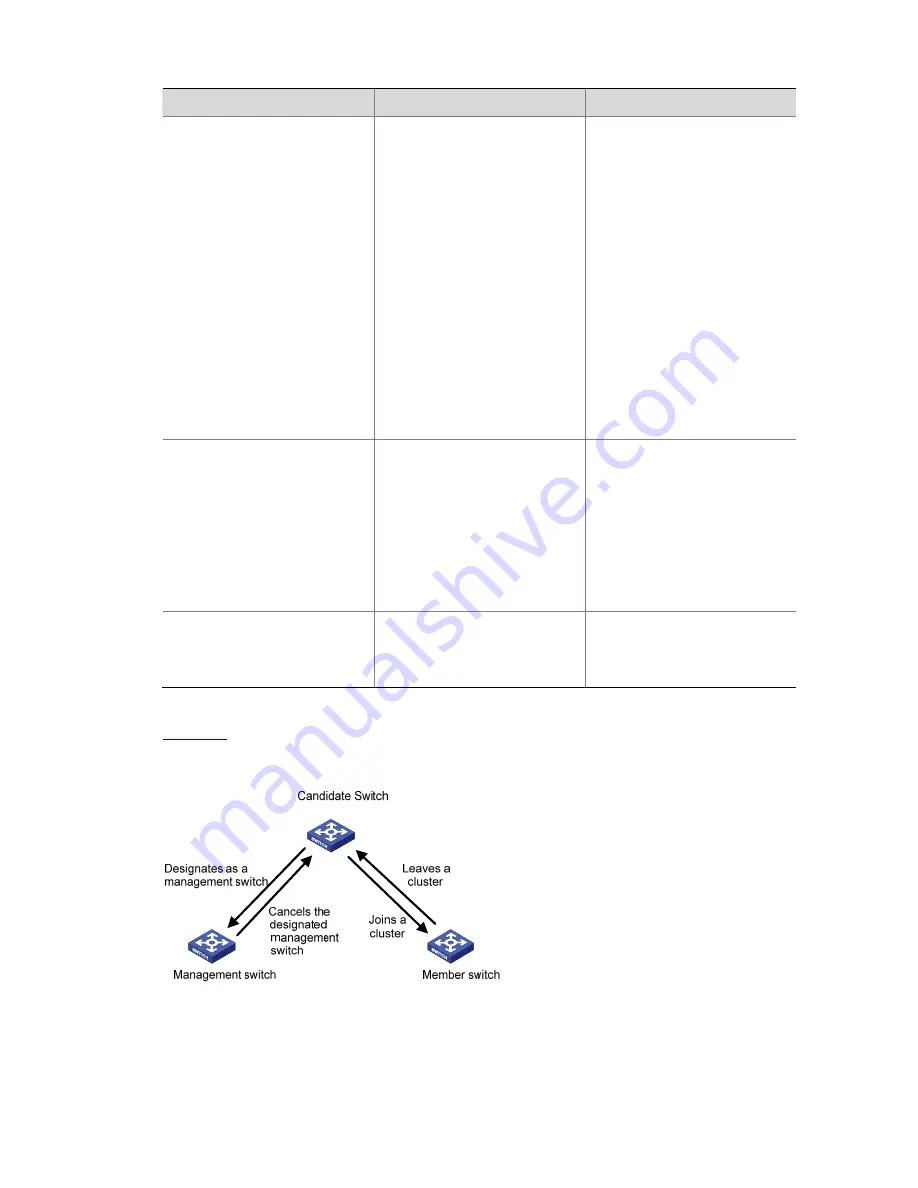
1-3
Table 1-1
Description on cluster roles
Role
Configuration
Function
Management device
Configured with a external IP
address
z
Provides an interface for
managing all the switches in
a cluster
z
Manages member devices
through command
redirection, that is, it
forwards the commands
intended for specific
member devices.
z
Discovers neighbors,
collects the information
about network topology,
manages and maintains the
cluster. Management device
also supports FTP server
and SNMP host proxy.
z
Processes the commands
issued by users through the
public network
Member device
Normally, a member device is
not assigned an external IP
address
z
Members of a cluster
z
Discovers the information
about its neighbors,
processes the commands
forwarded by the
management device, and
reports log. The member
devices of a luster are under
the management of the
management device.
Candidate device
Normally, a candidate device is
not assigned an external IP
address
Candidate device refers to the
devices that do not belong to
any clusters but are
cluster-capable.
Figure 1-2
illustrates the state machine of cluster role.
Figure 1-2
State machine of cluster role
z
A candidate device becomes a management device when you create a cluster on it. Note that a
cluster must have one (and only one) management device. On becoming a management device,
the device collects network topology information and tries to discover and determine candidate
devices, which can then be added to the cluster through configurations.
















































